Scopes have become an essential piece of equipment that most hunters can’t imagine not having on board. These have been around since the late 1800s but technology has come a long way since then.
Gun scopes are beneficial for everyone whether a beginner or sharp-shooter. They come in a range of types, quality, and features to fit any shooter’s needs. In this article, we will talk about what scopes are, types of scopes, how to sight one in, and how to choose a scope for your needs.
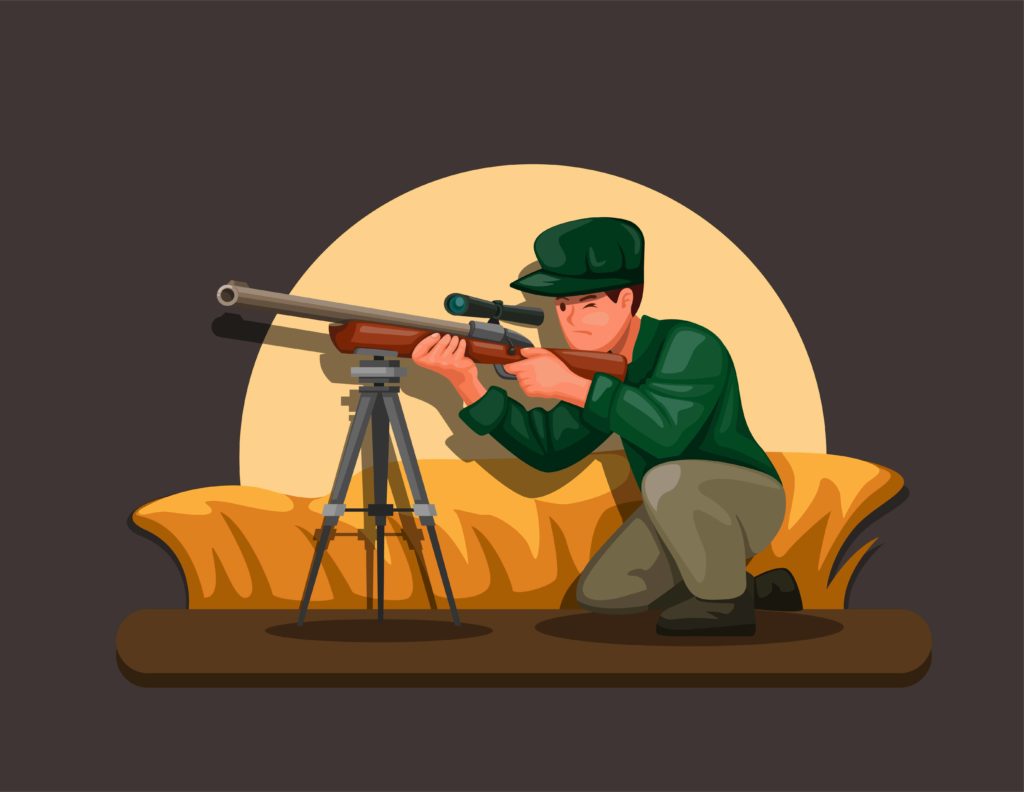
If you have a specific topic in mind, use our table of contents to move around to your most pressing questions.
Scope Basics
Whether you’re looking for an optic for your .22LR, .30-06, or .17WSM, scopes and optics can seem intimidating. If you’re just starting out, you may be wondering, “Why are there so many options and features, don’t I just need the highest magnification possible?” Let’s start with the basics and work our way into the nitty-gritty.
What is a Gun Scope?
In the simplest terms, a scope is a tube which contains a variety of lenses to magnify distant objects. These also contain a reticle or crosshairs that enable you to precisely aim at your target.
A gun scope can help view targets more precisely and ensure you land your shot. No matter how good of a shooter you are, a scope will increase the distance you can accurately hit your target.
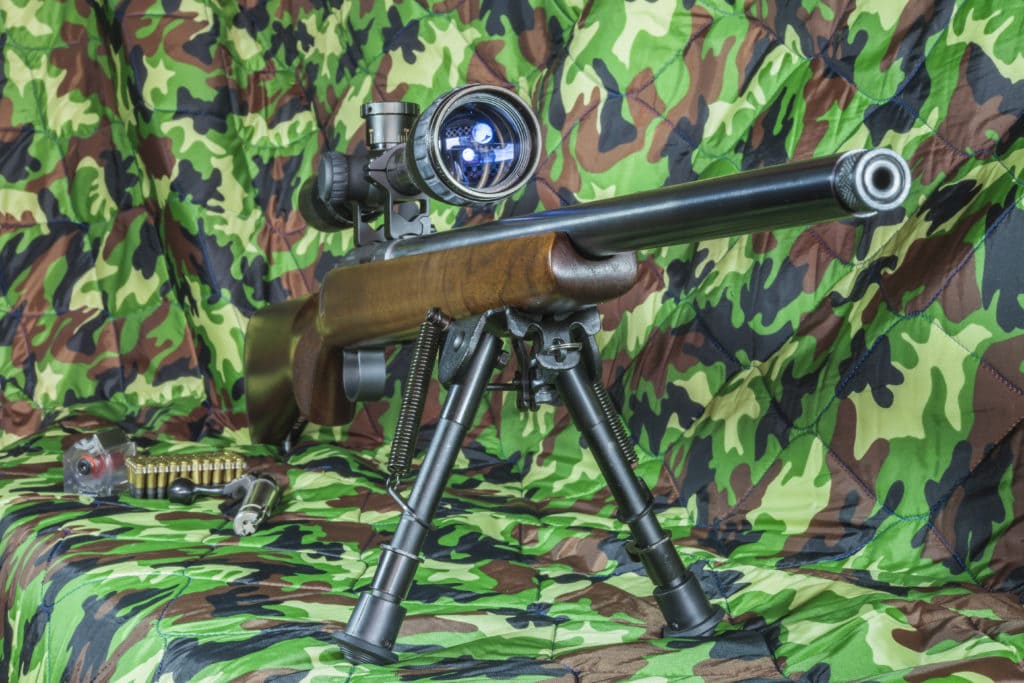
Many people have trouble distinguishing between a scope and a sight. Generally, scopes have two lenses on either end of a metal housing while sights use a single viewport.
Additionally, scopes always offer magnification and a sight typically does not. These lines have been muddied in recent years with some variable 1-4x variable magnification sights that look like a 2″ long scope coming to market. However, these two physical attributes will help you discern between sights and scopes in most cases.
Scope Terminology
Common terms and jargon can make it difficult to understand scopes if you don’t know what these mean. Here are some common terms you may come across when looking at scopes.
MOA
This stands for minute of angle. A “minute” is the measurement of an angle to 1/60th of a degree. A measurement of 1 MOA is equivalent to a one-inch spread 100 yards away.
Eye Relief
This is the distance between your eye and the scope. Eye relief allows you to have a complete field of view while still protecting your eye from recoil.
Objective Lens
The objective lens is what allows light into the scope. A larger objective lens allows more light and a brighter image. This is a measurement, usually in millimeters, such as 32mm.
Field of View (FOV)
FOV is a measurement of feet at a distance of 100 yards. It refers to the area a shooter can see from left to right. As magnification is increased, the FOV decreases and vice versa.

Parallax
Parallax is a distortion of how the reticle appears on the target. This is most commonly seen when moving your head or weapon around. Some scopes allow for parallax adjustment. This is generally only a concern when shooting over 50yards.
Turrets
Turrets are raised knobs that allow you to make adjustments for wind and elevation. These are usually located on the top and left side of your scope.
Zero
When you ‘zero’ your scope, you align both your optic and weapon so your crosshairs appear where you want your shot to hit. This adjustment is directly related to the shot distance, so a calibration is usually done at the typical distance the shooter expects to operate at, or at an easy distance such as 100 yards.
Fixed Power
A fixed power scope has a single magnification power and cannot be adjusted. This is expressed in two numbers such as 4×32 which means it can magnify 4 times and has a 32mm lens.
Variable Power
Variable power scopes can adjust the magnification with a range. For example, a 1-8x variable-power scope can magnify at any magnification between one and eight depending on your need. This can be expressed as 4 16x50mm or 4-16x50mm.
How Does a Scope Work?
A gun scope works by magnifying your target. This makes the object appear larger and therefore allows you to line up your shot properly.
A scope contains lenses that work together to make this happen similarly to a telescope. The objective lens at the forward end of the scope determines how much light enters the tube.
The target image enters the objective lens and is sent to the erector lens/tube.This is where magnification occurs and the reticle is superimposed over the image.
The image then appears at the ocular lens for the shooter.
In a variable magnification scope, the shooter can adjust the magnification which moves the magnification lens closer or farther from the objective lens.
This is the basic overview. There are many high-tech components located within the tube that each performs a vital function.
Types of Scopes
Of course, there are variable and fixed power scopes as discussed above. Outside of those designations, scopes are identified by their purpose and reticle.
There are scopes most suitable to target shooting, hunting, tactical activities, competitions, and home defense. It depends on what your needs are.
Scopes differ in many ways but the reticle can often be the make-it-or-break-it feature for many. Here are some popular reticle types.
Duplex
A duplex reticle is a solid vertical line that intersects with a solid horizontal line. The lines are thick until they near the center where they thin out to allow a clear view of the target.
Mil-Dot
A mil-dot reticle has evenly spaced dots that intersect rather than solid lines. These are commonly used by the military. In fact, the name refers to military angle measurements.
BDC
A bullet drop compensator, or BDC reticle, predicts and provides aiming that compensates for how far a bullet is likely to drop at a given range. This type does not intersect in the center but has various incremental aiming points stacked below your main crosshair to illustrate how much your bullet may drop at different distances.
You can also look into spotting scopes, which do not mount to your weapon but rather are free-standing. This is a good option if you plan on remaining in a stationary position but tend to be less practical for most shooting situations.
Read Before Buying
When you decide to purchase a scope, there are some important things to know before you begin your search.
Here are the most vital things to keep in mind:
Purpose
What type of shooting do you plan on doing? This will affect most of the other considerations above. Are you target shooting/plinking, competitive shooting, hunting, tactical, or solely for home defense? Make sure you choose your scope to match your intended usage.
Budget
Decide how much you can afford to spend and then try to find the best optic in that range. This helps keep things in perspective so you don’t get your heart set on a certain optic, only to find you can’t afford it.
Power
There are a couple of power aspects you need to know. First, do you want a fixed or variable scope? Learn about them in the section above to help you decide.
Next, you need to know how much magnification you need. Don’t spend more than necessary to get a scope that magnifies farther than your weapon can shoot. This is a waste unless you plan on purchasing a more powerful weapon in the near future.
FFP/SFP
Do you want a first focal plane or second focal plane reticle? A first focal plane reticle will change size as you magnify because it is located before the magnification lens. A second focal plane reticle is located after the magnifying lens and therefore, remains the same size even as you magnify. Generally, FFP scopes will be more expensive.


Reticle/Specs
We’ve already discussed the types of reticles above, but you should determine which type you prefer before clicking the “buy” button or ringing it up at the store.
By knowing the terminology and determining what you need, want, and expect out of your optic, you will be sure to find one that is a perfect fit for you.
Popular Scope Brands
When choosing a rifle scope, try to stick with reputable brands. These brands are well-known for their quality and innovation in scopes and will be more likely to provide a great product, customer service, and will function for a long time. Here are some of the top brands on the market today.


● Vortex
● Leupold
● Bushnell
● Nikon
● Swarovski Optik
Scope Tips
Like anything else, there’s a learning curve when it comes to scopes. Here are some common tips to help you out.
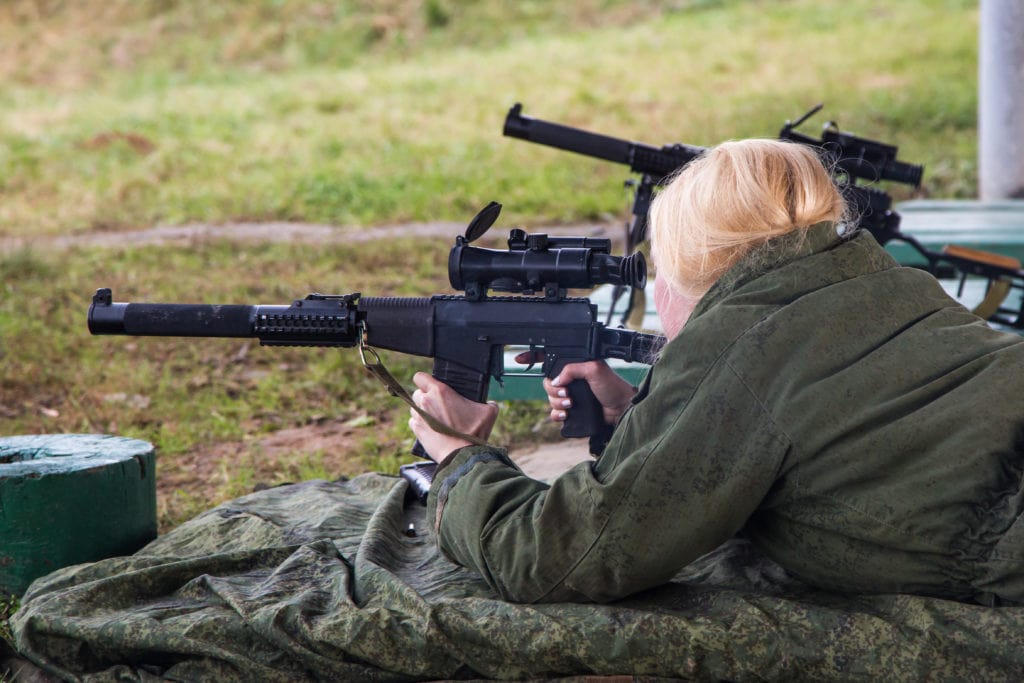
Common Scope Issues and Troubleshooting
A scope is a high-tech piece of equipment and as such sometimes can need a little troubleshooting. Here are some common problems and solutions to scope issues.
Why Won’t My Scope Adjust?
● If you’ve tried adjusting your scope but are still having issues, go back to square one. Make sure your scope is properly positioned atop your rifle to vertical center.
● Adjust the height of your scope. Be sure it is set to you specifically.
● Next, remove the scope from your rifle completely and try a different scope. If the new addition functions fine, you have an issue with the scope itself. If the new one has the same problem, it is likely the mount.
● Check that your mount holes are aligned and your rings or scope mount are properly attached.
● Eliminate each possible issue and if nothing is found, then you may have a faulty or broken scope.
Scope Is Elevated Too Much
If your scope is “bottomed out” and you are still shooting too high or too low, you should disassemble your scope assembly. Check for shims that are unnecessary, be sure holes are drilled properly, reset the windage to verify the setting isn’t throwing off your shot. As a last resort, try getting a laser bore sighter. You can also check with the manufacturer to see if the scope is under warranty if you suspect it is a defect.
My Reticle Is Blurry
A blurry reticle usually indicates your scope is not calibrated to your vision. If you’ve had a vision change, someone else has used your scope, or you usually wear glasses but currently are not or have not in the past, you will need to recalibrate your scope to your vision.
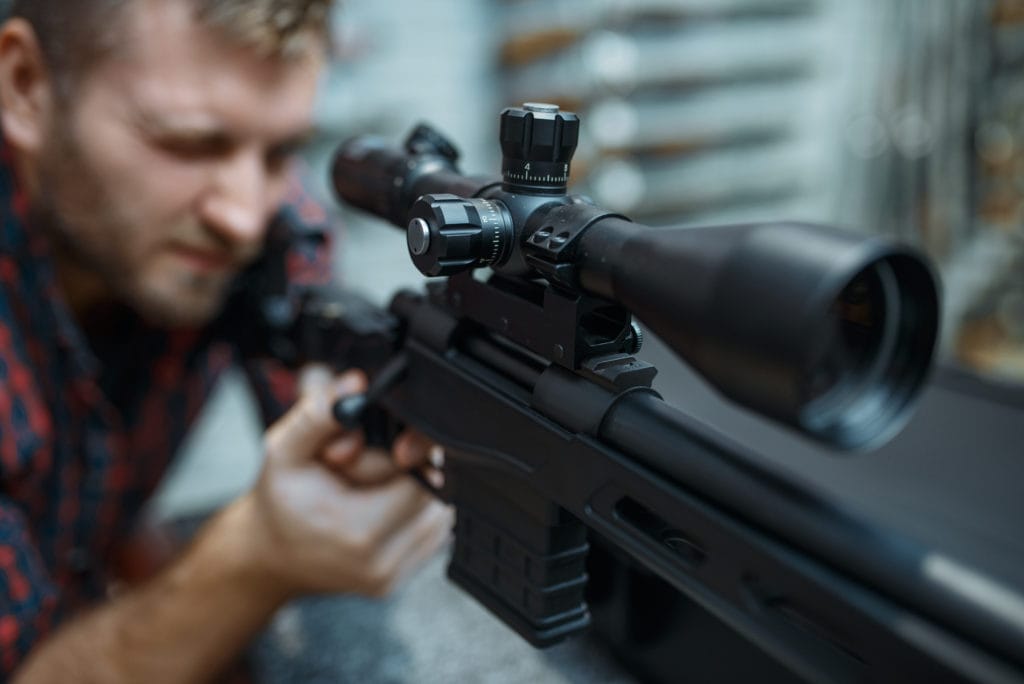
How Do I Combat Scope Shift?
When your POI (point-of-impact) no longer matches where you are aiming, this can be frustrating and cause you to miss important shots.
Parallax is a common cause of scope shift. If your scope has parallax adjustment, try adjusting to find a clearer picture.
Adjust your cant angle if your gun tilts to one side or the other. Also consider whether you are shooting at various distances. If you are zeroed into 50 yards, you will experience blur at any other distance.
How to Mount a Scope
Mounting a scope right the first time will make sure you don’t have to waste valuable time taking it apart and putting it back together later. Here is a simple guide to mounting your scope.
1. Unload your rifle’s bolt and clip. Safety is the highest priority.
2. Gather your supplies. You will need bases, rings, a torque wrench and/or a Phillips screwdriver.
3. Read your scope’s manual. This has instructions on how tight each piece needs to be as well as adjustment and mounting directions.
4. Do a “dry mount” so you can see how everything fits together.
5. Attach the rings. Be sure to check the position, as you can mount the scope forward or back. This is dependent on the scope so, before tightening, set your scope in place to be sure the rings line up.
6. Set the scope in the rings without tightening and gently lift the rifle to your eye. Slide it back and forth until most of the shadows around the edges disappear. You should have a full view through the scope.
7. Attach the top half of the rings and loosely secure your scope.
8. Level the rifle. There are many tools you can use to accomplish this. If none are available, find a perfectly vertical line to use as reference such as a door frame to be sure you, your rifle, and your scope align vertically. As a friend or companion to help verify this and to watch for any canting.
9. Now tighten all screws to manufacturer’s specifications. Do this incrementally, alternating sides to prevent pulling the scope down on one side or another.
Now you’re ready to bore sight and take some practice shots. Here is a video to help you out.
How to Sight In a Scope/How To Zero In a Scope
After mounting, your next step is to zero your scope. Here is a step-by-step to help you accomplish this.
1. Read the scope’s recommended zeroing instructions. Always follow those when available.
2. Start closer than you expect to avoid wasting ammo. Use the cheapest type of ammo for this. Keep whatever ammo you intend to use regularly nearby to use once you get the rifle close to where you need it.
3. Be sure the target is at exactly the yardage you want to zero to. Using a rangefinder can help with this.
4. Set up your rifle the way you plan on using it. If using a bipod/tripod, set it up on that. If you’ll be running and gunning, position it the way you will when shooting.
5. Load your weapon and set up a target at 25 yards. Shoot 1-3 rounds to see where your shots are hitting. Make adjustments to the scope based on how far off you were. Also check all your mount screws to be sure they are all tightened to avoid any variations when shooting.
6. Move your target out to 50 yards and repeat the process. Once you are hitting where you need, move the target out to 100 yards.
7. Continue alternating adjustments and shooting to perfect your shot group. Once you are consistently hitting where you aim, your rifle is zeroed and ready.
Here is a video of the process.
When is it Time to Replace My Scope?
Scopes are made to withstand a variety of conditions for their lifetime. Some scopes even have lifetime warranties. So if you think there’s an issue with your scope, check to see if it is under warranty before spending money unnecessarily.
However, here are some signs that you either need to repair or replace your scope:
● Large shot to shot variance despite using reliable ammo.
● You hear rattling inside that wasn’t there before. – This can mean internal components have become detached.
● Inability to zero your rifle despite making usual adjustments.
● Knobs and adjusters are wobbly or are difficult or too easy to turn.
● The reticle is no longer in the center.
● Your view is foggy and you can’t see clearly.
● The lenses are cracked or the scope has obvious damage.
● Your shots don’t react as expected to your adjustments.
If any of these things come up, it is time to either send it in under the warranty (if applicable) or purchase a new scope.
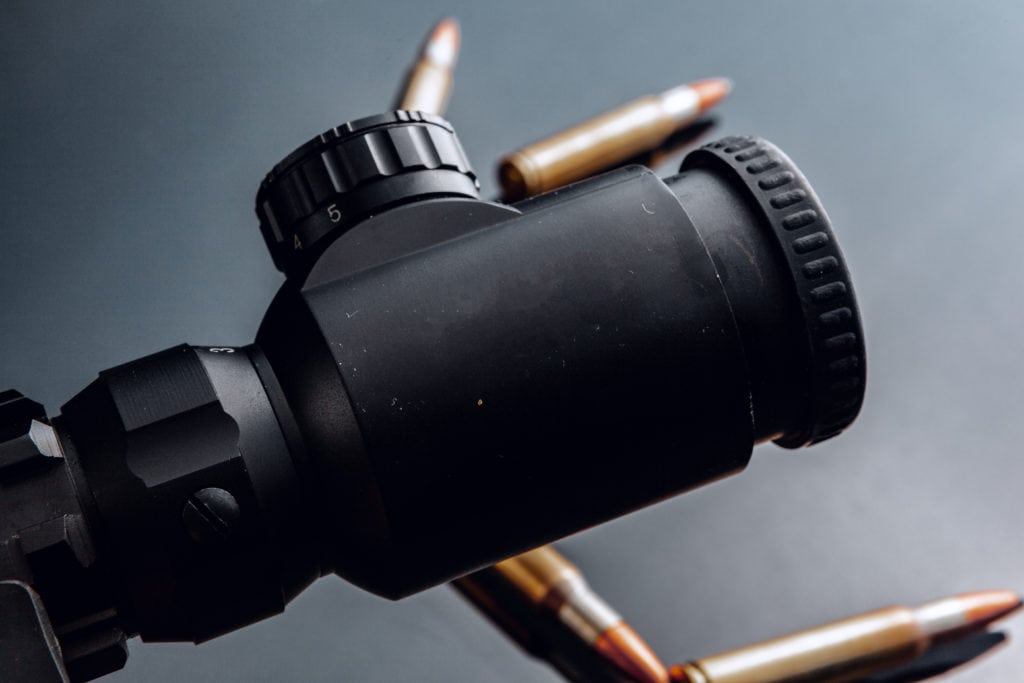
Can You Really Find a Quality Scope That’s Affordable?
It is possible to find a quality scope at most price ranges. However, you won’t get the extra bells and whistles that come with higher-priced scopes. It comes down to determining what you really need, as opposed to wanting all the “extras”.
Start with your budget and then look within that price range. Focus on reputable brands to be sure you get a product that will last you a long time. Watch for warranties which can further protect your investment. Once you have a handful of products, find the one that fits your needs the best and then look into those with a bit “extra” compared to other models. This will get you a great scope at a price you can afford.
Conclusion
When looking for a hunting scope, you want to remember your purpose. Whether you need a scope to hunt deer, elk, or varmints, you can find one that matches your intent. Also be sure to know whether you need a scope that is accurate at 50 yards or 1000 yards.
Keeping the factors mentioned above in mind will help you determine exactly what you need and will ensure you get a scope that will help you become a better hunter. Hopefully, you found what you were looking for here. Now get out there and hunt!

Big Game Logic is a participant in the Amazon Services LLC Associates Program, an affiliate advertising program designed to provide a means for us to earn fees by linking to Amazon.com and affiliated sites. Pages on this site may include affiliate links to Amazon and its affiliate sites on which the owner of this website will make a referral commission
